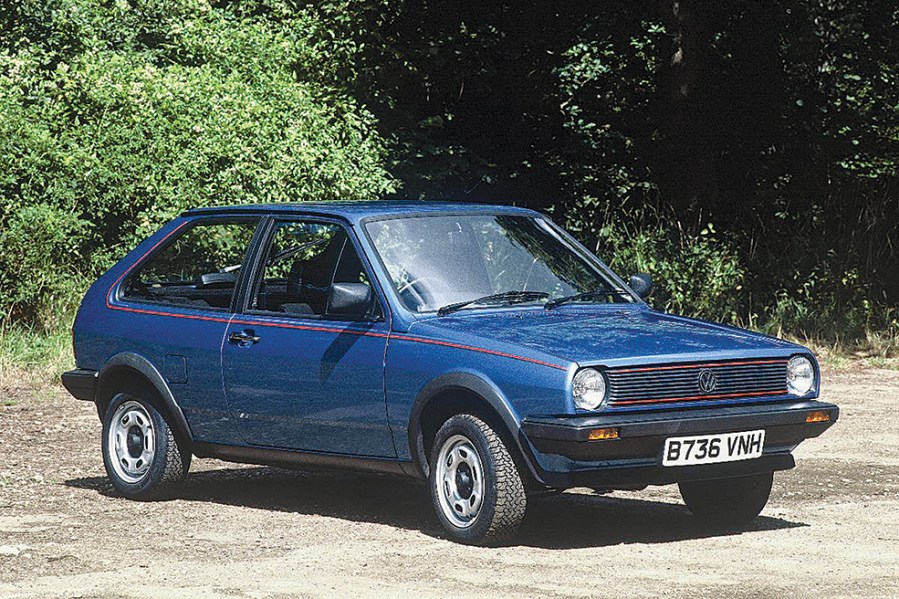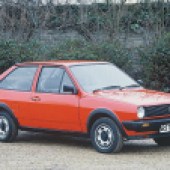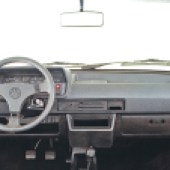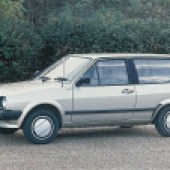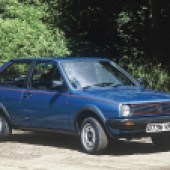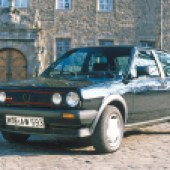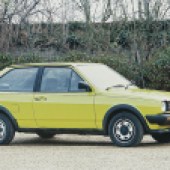Tired of the complexity and nannying of modern cars but don’t want to go back to carburettors, condensers and chrome? The Volkswagen Polo Mk2 could be just the ticket
The Mk2 Polo was launched in late 1981 and reached the UK a year later. In typical Volkswagen fashion, it was largely an evolution of its predecessor, with dimensions unchanged apart from a slightly wider track.
The EA111 engine carried over, with iron block, alloy head, single overhead cam, and Pierburg carburettor. The underpowered 895cc unit was enlarged to 1043cc/45bhp for the entry-level Polo C, while CL and GL retained the 1093cc/50bhp engine, the small output difference compensating for extra weight. All engines had four-speed manuals. Running gear remained conventional, with MacPherson struts front, torsion beam rear, unassisted steering, and front disc/rear drum brakes. LHD cars had a brake servo, but RHD models did not, meaning UK braking drew criticism.
Styling changes were minimal, except at the rear. Initially, only a tiny three-door estate with a near-vertical rear window was offered, soon nicknamed the ‘Breadvan’. Interiors were updated for refinement, though equipment stayed basic. Noise reduction, smoother ride, and improved rust protection earned the Mk2 a reputation for reliability, many lasting 10–15 years blemish-free.
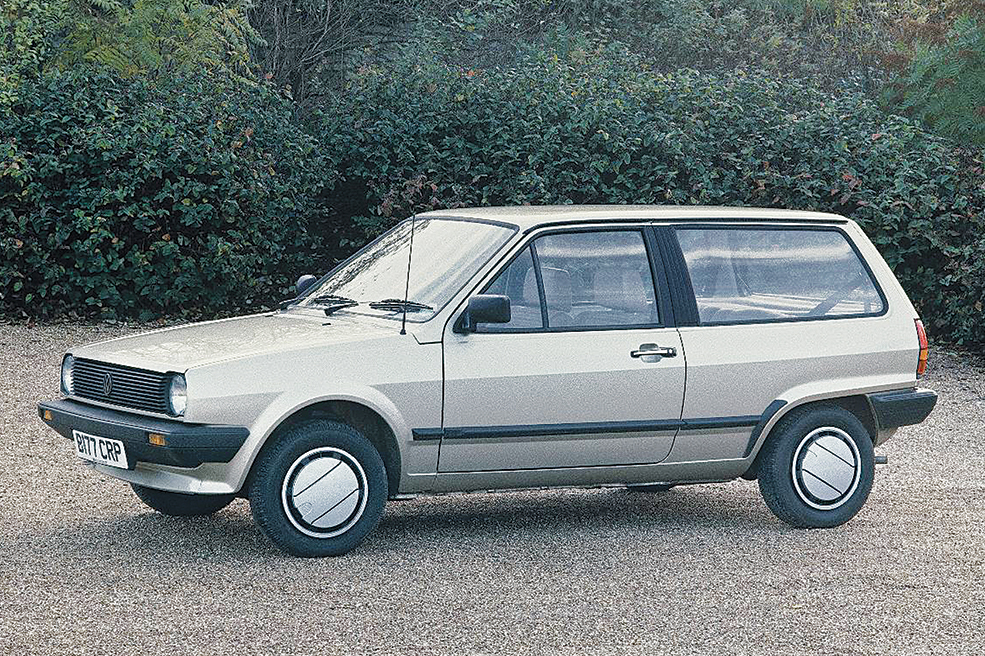
In 1983, the range expanded with the Polo Classic, a two-door booted saloon with square headlamps replacing the Derby. Months later, the slant-back three-door hatch returned as the Polo Coupe, with Golf GTI-inspired touches: wheel-arch extensions, rear spoiler, rev counter, low-profile tyres, and striped seat cloth; the original estate became the Polo Hatchback, initially 1093cc only.
From 1984, the 1093cc engine was replaced by a 1.3-litre 55bhp unit, and a basic Hatchback introduced. In 1985, the Classic became the Saloon with round headlamps; a standard Coupe joined, powered by the 1.1-litre engine, while the 1.3-litre Coupe became the Coupe S, gaining bucket seats, grille driving lamps, a three-spoke wheel, and digital clock.
In 1986, engines gained automatic chokes, five-bearing camshafts, hydraulic tappets, and electronic ignition, improving usability and reducing maintenance. VW marked the two millionth Polo with the Ranger Hatchback, a top-spec model with alloys and driving lamps. Subsequent special editions added extras such as radios, sunroofs, or driving lamps, often with flamboyant trim.
In 1987, the Coupe S gained a five-speed gearbox (4+E); mid-range models followed in 1988. In 1989, the basic Hatchback became the Fox.
The Mk2 received a major facelift in September 1990, internally the Polo 2F, sold as the Polo Catalyst, now with catalytic converters and fuel injection. RHD cars finally gained a brake servo. Facelift changes included flush rectangular headlamps, larger bumpers, updated rear lamps, and styling reminiscent of a mini Mk2 Golf. The dashboard mirrored the Mk3 Passat, with full-height door trims. Three trims were offered: Fox, CL, GT; the Saloon was CL-only, while Hatchback and Coupe had uniform pricing.
Fox had a 1.1-litre 45bhp engine; CL could choose 1.1 or 1.3-litre 55bhp; GT had a 75bhp 1.3-litre unit. Gearboxes varied, but even GTs remained sensible cars with tidy handling.
In 1991, the Polo G40 arrived – a GT-spec Coupe with VW’s G-Lader supercharger, 113bhp, 0–60mph in 8.6 seconds, and 120mph top speed. It featured 65% stiffer front springs, 25mm lower suspension, stiffer anti-roll bars, and uprated bushes and balljoints, recapturing the spirit of the Mk1 Golf GTI.
Despite this, the Polo was a ten-year-old design rooted in 1974. Reliability remained strong, but it increasingly felt low-tech, unrefined, and dated compared with modern superminis. Production ended in August 1994.

Volkswagen Polo Mk2 values
Polo Mk2 prices vary widely depending on condition, mileage, and model. Project cars needing full restoration can start around £500-£1500, often with rusty panels or worn interiors. You’ll have some work to do, but a useable and practical classic in the meantime. Everyday, useable examples in good condition typically sell for £2500-£5000, but you might have to settle for whatever specs are available at the time. The more desirable Coupe S, Polo G40, or limited-edition Ranger and Catalyst models command higher sums, from £6000 up to £12,000 or more, especially if original and rust-free.
Insurance Costs
1983 VW Polo Mk2 1.1, £2500 value
Example quote: £109.97 or £127.97 with Agreed Value.
Quotation supplied by Lancaster Insurance. Tel: 01480 400761
Quote based on a 45-year-old marketing manager, access to another car, no claims or convictions, club member, 3000 miles per year, no modifications, living in SP2 0HL. Disclaimer: Subject to underwriting criteria. An additional charge may be payable. Authorised and regulated by the Financial Conduct Authority.
Bodywork
The Polo’s reputation for rust resistance is well deserved, but with cars now at least 25 years old, corrosion can be an issue. Check peripheral areas first, such as sills (especially jacking points), door bottoms and the front valance. The petrol tank and filler neck are steel, with the latter particularly prone to perforation, so watch for fuel leaks.
Inspect around the windscreen for rust bubbling from perished seals, which can cause damp smells, condensation, and corrosion on the bulkhead and footwells. Window seals are less critical and easier to replace. Check the floors, ideally from underneath or by lifting the carpet. Exhaust hangers often rust through, leading to MoT failures.
More serious rust occurs at suspension mountings – the inner wings around the upper MacPherson strut mounts and rear torsion beam attachment points. In the engine bay, check the battery tray for corrosion.
Also look for signs of bump damage at corners and ends; breaks in paint from minor shunts or misjudged parking encourage rust. Finally, inspect door latches for signs of attempted or repaired break-ins…
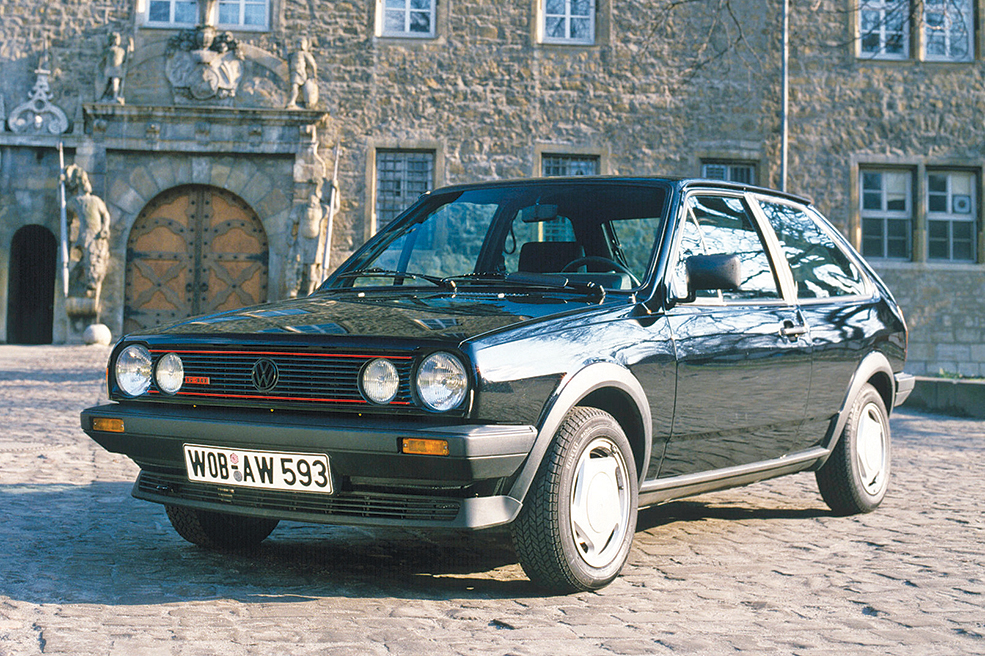
Engine and transmission
The engines have no major inherent faults but are often compromised by a lethal combination of under-use and poor maintenance. The cambelt should be replaced every four years or 40,000 miles. Oil changes are required every 6,000 miles or six months using good-quality semi-synthetic oil, particularly on later cars fitted with hydraulic tappets. When in good condition, the engines should run smoothly and almost silently, but they become rattly if the tappets have seized or clogged.
Check the coolant level and cleanliness (which should be renewed every two years using a strong anti-corrosive/anti-freeze mix), the radiator’s condition (many suffer slow leaks at the edges or have large sections of missing finning) and for any signs of water leaks from the pump.
Listen for rumbling or squealing from the water pump in the timing belt cover – if the pump seizes it usually destroys or snaps the timing belt as well. Allow the car to idle to ensure the cooling fan engages at the correct point. The engine should idle evenly and start readily whether cold or hot (for a cold start, depress the throttle fully once and release to engage the choke). An uneven idle, flat spots, engine run-on, or difficulty starting when warm usually indicates the carburettor needs a rebuild, which is relatively inexpensive.
Inspect the air filter housing for oil accumulation, as this suggests the engine is either worn or has suffered overheating damage. In either case, the car is not worth pursuing. On G40s, check the intake hoses for oil deposits from a worn supercharger – these units require rebuilding roughly every 40,000 miles at a cost of around £500 each time.
The transmission appears to be the weak point on older Polos. Even new, they were prone to oil leaks, which worsen with age as seals shrink. This often leaves gearboxes running dry, though the level is difficult to verify at a forecourt or on a seller’s driveway. Best to assume you may need to stop for a litre of 75W/90 gear oil on the way home. Listen for whining from bearings or gears reluctant to engage, especially under heavy load. Synchromesh is generally durable, though high-mileage or neglected examples may have issues. Fortunately, spare gearboxes are still widely available.
The clutch is another area of concern. The friction plates themselves are usually reliable, although many older Polos show signs of wear from owners with less-than-ideal clutch technique. The operating mechanism, from pedal to release bearing, can wear or seize and is both difficult and expensive to replace. Ensure the clutch operates smoothly, without graunching, twanging, or stiff spots.
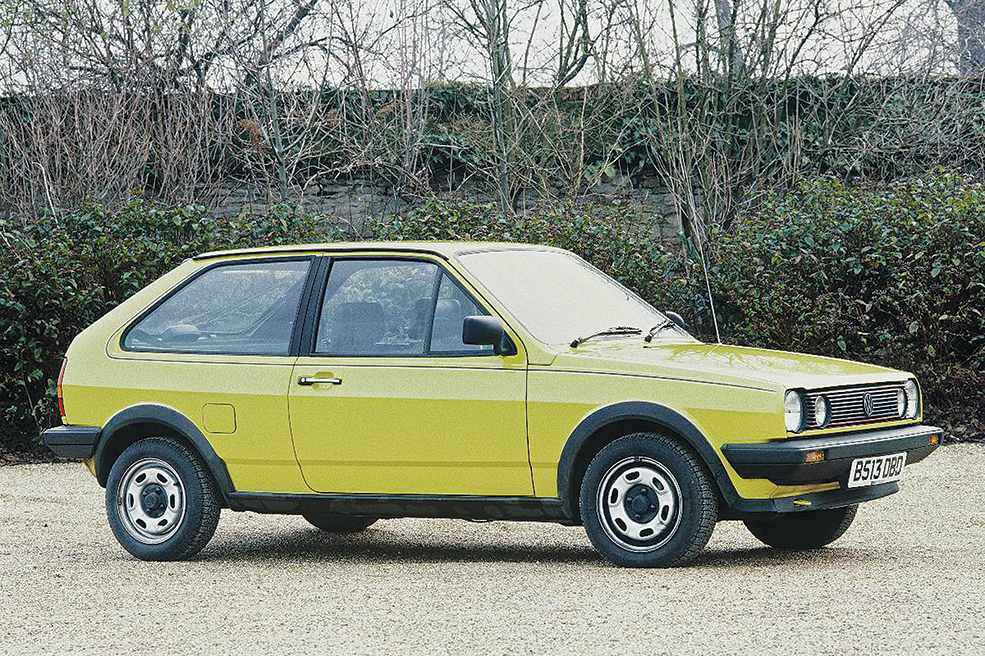
Suspension, steering and brakes
The brakes on the original Mk2 Polo were notoriously under-specified due to the absence of a servo. While ultimate stopping power is adequate for a light, low-powered car, the pedals require a fair amount of effort to be effective, and the system must be in excellent condition to avoid any nerve-wracking moments. The setup itself is conventional and reliable, needing only routine checks for leaking cylinders, sticking calipers, perished flexible hoses, and worn pads. For some reason, Mk2 Polos seem to wear through front discs unusually quickly, so these should be inspected for scoring, wear, and corrosion.
The remainder of the running gear is fairly straightforward, limited to the usual checks on damper performance, wheel bearing condition, and any signs of slack or play in the steering linkages and bushes.
Front strut top mounts are known to be noisy, and poorly informed MOT testers will sometimes fail the car for excessive movement, which is actually normal for this design.
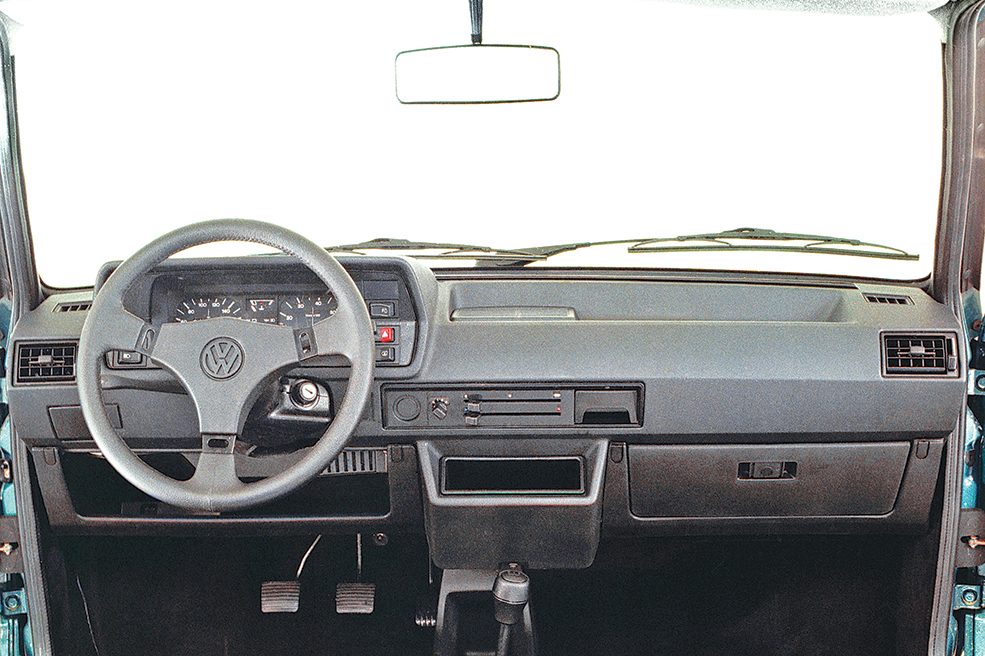
Interior and trim
A Polo’s interior is very basic – but robust and unlikely to fail. Make sure any soft trim, such as seat covers, is in good condition – as replacing or repairing worn seats is far too costly for what these cars are worth. Check for signs or smells of leaks from perished door and screen seals – and ensure the windows wind up and down smoothly, as regulators can seize, bend or break.
Switch on the heater fan and listen for rattling or screeching noises. If it does make noise – or doesn’t work at all – the motor and fan will need replacing, which is a tricky dash-out job. Also watch for evidence of a leaking heater matrix, such as condensation or antifreeze deposits on the screen – and damp footwells.
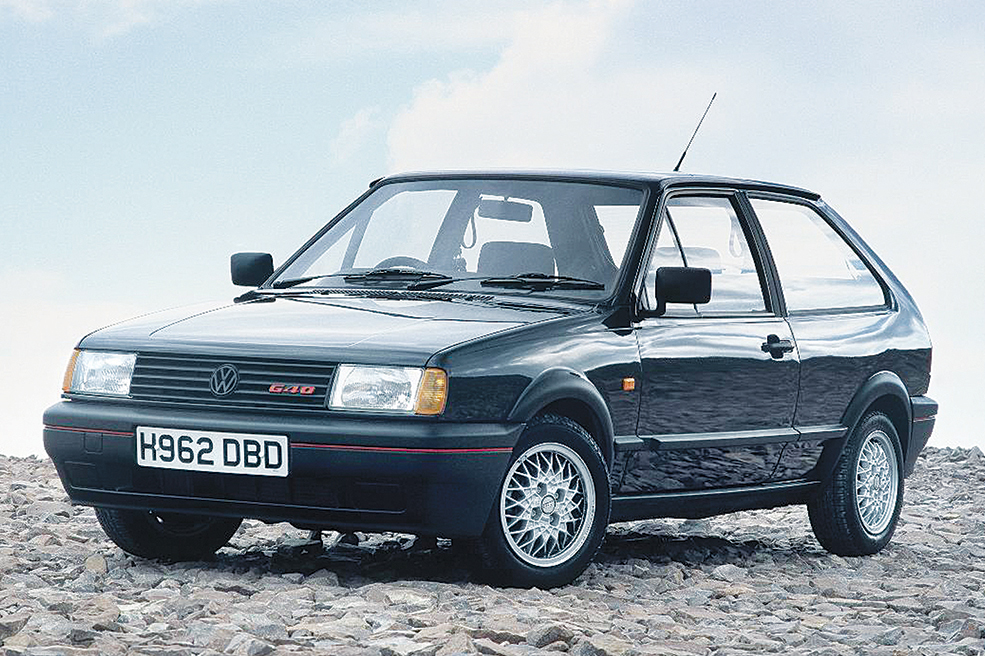
Volkswagen Polo Mk2: our verdict
Never particularly thrilling or captivating, the baby Volkswagen was nonetheless one of Europe’s bestselling cars in the 1980s and performed strongly here in the UK. It lacked the glamour and street cred of its larger sibling, the Golf, yet earned a reputation as simple, reliable, economical, well-built, and unremarkable – but in a good way – compact transport.
It boasted some of the lowest warranty claim rates and highest resale values of any supermini of its era, with many still quietly going about their business a decade or more after production ended in 1994.
Many of these once-ubiquitous cars have since disappeared, lending genuine appeal and a “you don’t see these much nowadays, do you?” factor to a well-kept example, while also recalling a seemingly lost era of motoring – when windows were wound by hand, wing mirrors were lone items, radios were optional, and tyre sidewalls and tread widths were one and the same.
Model Timeline
1981
Polo Mk2 launched, offered as two-door and four-door hatchbacks, with petrol engines from 0.9- to 1.3-litres.
1982
Two-door Polo Coupe GT introduced, boasting 75bhp 1.3-litre engine, servo-assisted brakes, twin headlights, sports seats, rev counter.
1983
Coupe added to the regular range using the Derby’s roof and side windows.
1984
All-new 1.3-litre engine introduced, facelift brings new dashboard, larger fuel tank and round headlights across the range. Saloon renamed from Derby to Polo Classic.
1986
Engines updated with hydraulic tappets, new camshafts/valve gear, and automatic choke. 1043cc engine replaces the 1093cc unit. In some markets, 1.3-litre engines become fuel-injected with a catalytic converter.
1987
Polo G40 supercharged version introduced as motorsport homologation, boasting 114bhp – produced in 500 units, left-hand drive only.
1990
Further facelift (unofficially ‘Mk2F’) launched with square headlights, bigger bumpers and new interior. All engines now have catalytic converter as standard. G40 reintroduced as full production model.
1994
Mk2 production ends after more than 2.7 million sold.

